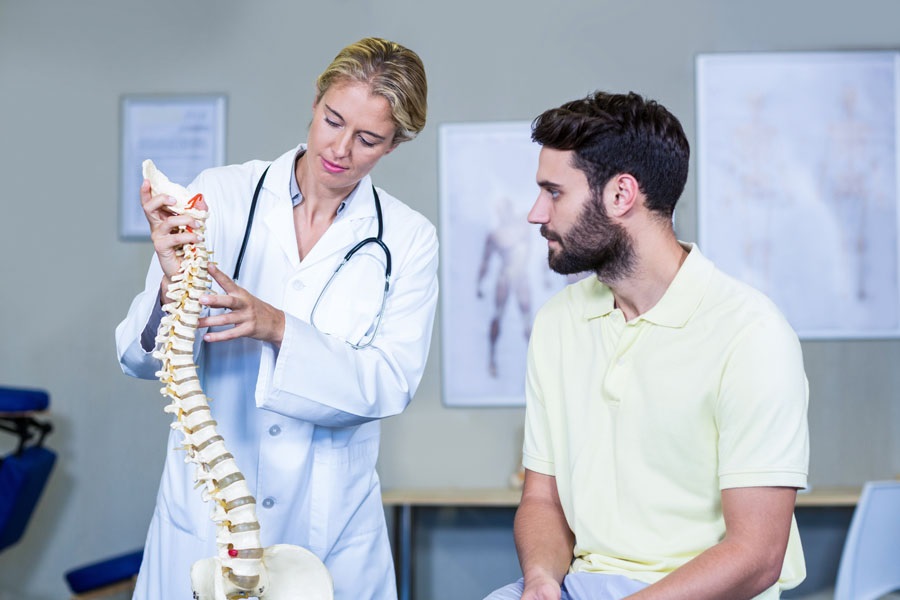Osteopathic Medicine: A Hands-On Path to Holistic Healing

Numerous medical disorders may be diagnosed and treated using the osteopathic method. It deals with the anatomy and physiology of the body, predicated on the idea that a person’s health is contingent upon the proper operation of their bones, muscles, ligaments, and connective tissues.
Osteopaths for osteopathy use touch, physical manipulation, stretching, and massage to improve blood and nerve flow to tissues, release tension from muscles, improve joint mobility, and support your body’s natural healing processes. In order to speed healing, advance wellness, and stop symptoms from coming again, they could also provide guidance on posture and exercise.
What An Osteopath May Expect
A consultation with a DO is just like a consultation with any other kind of physician. You’ll walk on a scale and get your blood pressure measured. They will want to know about your diet, your exercise routine, your level of stress, and any symptoms that are bothering you in addition to details about your lifestyle.
Since osteopathic medicine places a strong emphasis on prevention, your DO will likely provide you guidance on how to stay healthy in the long run and steer clear of illnesses or accidents. In addition to recommending basic medical testing like mammograms or cholesterol blood tests, an osteopath may help you stop smoking and provide any necessary vaccinations. They can also suggest screening tests for mental health issues like depression.
An All-Encompassing Strategy for Direct Care
One in four medical students are enrolled in an osteopathic medical school, making osteopathic medicine one of the fastest-growing health care specialties in the nation.
Osteopathic physicians work in all areas of medicine, including paediatrics, emergency medicine, psychiatry, osteopathic primary care, and surgery. In addition, DOs now occupy some of the most illustrious roles in medicine, such as managing the care of the President, Olympic competitors, and many members of the uniformed forces.
DOs are taught to look beyond your symptoms and consider the ways that your surroundings and way of life affect your overall health from the very first day of medical school. While practicing medicine in accordance with the most recent advances in science and technology, they also take into account alternatives to medications and surgery.
Doctors of Osteopathy (DOs) undergo specialized training in the musculoskeletal system, which is your body’s network of nerves, muscles, and bones. They provide patients with the most complete treatment now offered in healthcare by fusing this expertise with the newest developments in medical technology.
By emphasizing prevention and being aware of the ways in which a patient’s surroundings and way of life might affect their health. Instead of merely helping patients feel better, DOs work to help them achieve true health in mind, body, and soul.
For various diseases, some people discover that this natural remedy works better than medication or surgery. Although it may assist treat a variety of health issues, it is often used to relieve muscular discomfort. These issues include:
Lower back discomfort
Ache in the neck
Sports-related injuries
Injury caused by repetitive stress, such as carpal tunnel syndrome
Certain headaches, such as migraines
Inhalation
Sinus issues
Pain during menstruation
OMT is used by some pediatric DOs to treat colic, earaches, and asthma. Only a few of high-quality studies have examined the use of OMT in pediatric patients so far. The outcomes have been inconsistent.
A day or two after the procedure, you can have some pain. Other side effects are often absent. Your DO may determine that you need further treatments, such medication or surgery, based on the specifics of your situation.
A SNEAK PEEK AT OSTEOPATHIC MEDICINE:
- The primary care disciplines of family medicine, internal medicine, pediatrics, and osteopathic manipulative medicine employ around 57% of practicing osteopathic doctors.
- The top five non-primary care specialties are psychiatry, general surgery, obstetrics and gynecology (OB/GYN), anesthesia, and emergency medicine.
- Many DOs practice in underprivileged and rural areas close to their medical school graduation, meeting a significant demand for healthcare.
In summary
All osteopathic doctors from wellness clinic get training that includes OMM. Using OMM, doctors use their hands to detect diseases and injuries while promoting your body’s innate propensity toward wellness. Physicians that specialize in orthopaedic mental manipulation (OMM) provide their patients with the most complete therapy currently accessible in medicine.













